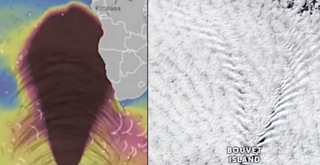Fukushima
Fukushima: Don’t Worry NUKE WASTE COMING to an Aquifer NEAR YOU!
from MsMilkytheclown1:
VIDEO:
You’ve Got to see this… UnFukushima Believable…
Cleanup Starts in Fukushima’s Restricted Zone – Aug. 28, 2015 SO THEY CAN MOVE BACK AND REBUILD!
Full-scale decontamination work has begun in one of the areas in Fukushima Prefecture that received the highest doses of radioactive fallout from the 2011 nuclear accident.
About 30 workers gathered at an elementary school in the town of Okuma on Friday. They used heavy machinery to remove top soil from the playground.
Okuma partly hosts the Fukushima Daiichi nuclear plant. The government has determined that some parts of the town will remain restricted areas where people will not live for an extended time.
In these restricted zones, decontamination work had only been carried out on an experimental basis.
But at the request of town officials, the Environment Ministry decided to launch full-scale cleanup work targeting a district where there are a lot of schools and public facilities.
The ministry plans to finish decontaminating the roughly 95-hectare area by next March.
Similar restricted zones exist in 6 other municipalities in Fukushima.
Ministry officials plan to decide whether to start decontaminating them after checking their radiation levels and the wishes of the residents.
~~~~~~~~~~~~~
“Abnormalities” Found in Fir Trees Near Fukushima Plant- Aug. 28, 2015
Japan’s Environment Ministry has found abnormalities in fir trees near the crippled Fukushima Daiichi nuclear power plant.
The ministry has been observing about 80 species of wild animals and trees near the plant since 2011, when Japan suffered its worst nuclear accident.
At the request of the ministry, the National Institute of Radiological Sciences analyzed fir trees in areas where radiation levels are relatively high and published the results on Friday.
The results show that Japanese fir populations in the area showed a significantly increased number of morphological defects, including deletions of leader shoots of the main branch axis.
The study shows that 98 percent of fir trees in a 3.5-kilometer area from the damaged plant have defects. The radiation dose in the area is about 34 microsieverts per hour.
The results also show that 44 percent of fir trees have defects in an 8.5-kilometer zone with 20 microsieverts of radiation, and 27 percent in a 15-kilometer zone with 7 microsieverts of radiation.
BULLSHIT WARNING: The Environment Ministry says no abnormality has so far been confirmed in other animals and trees.http://enenews.com/?s=mutation+mutated are just a few
~~~~~~~~~~~~~
Many baby seals dying of leukemia-linked disorder along California coast — Blamed for over 1/3 of recent deaths at San Francisco Bay rescue center (CHART) http://preview.tinyurl.com/onck63p
~~~~~~~~~~~
I missed the fisherman story MissingSky101 has here: Fukushima Propaganda News 8/28/15: Decontamination for Dummies; Tepco Bribes Fukushima Fishermen https://youtu.be/-FVoHwwfOVI
~~~~~~~~
Local govts allowing nuclear waste to be dumped near small Texas town – reporthttps://youtu.be/lP_Uxti2RN4 A new report has found that large quantities of nuclear waste from power plants are being dumped into a remote desert town located in Texas, potentially impacting water flowing into one of the biggest aquifers in America
~~~~~~~~~~~~~~
Sendai Nuclear Plant Resumes Output Increase IN SPITE OF LEAKS AND CRACKS in Cooling Pipes! Aug. 27, 2015
The operator of Japan’s only restarted nuclear power plant has resumed increasing power output one week after equipment trouble forced it to suspend the ramp-up.
Kyushu Electric Power Company suspended the output increase last Thursday after a problem was found with one of the No. 1 reactor’s condensers at the Sendai plant in Kagoshima Prefecture in southwestern Japan.
The utility said seawater leaked from damaged intake pipes into the condenser. The company stopped increasing the output while it inspected the equipment and fixed the problem.
The utility had restarted the reactor just 9 days earlier, on August 11th. It was generating power at 75 percent of capacity at the time of the suspension.
The condenser turns steam that drives the turbine back into water. Neither the steam nor the water is radioactive.
The utility said on Thursday that it had completed its inspections and fixed the problem by the previous day, and that nothing else amiss had been found. The company started increasing energy output again in the morning, and it had reached 95 percent by the evening.
However, the utility might miss its target to go back into commercial operation by early September.

















